Walrus counting from space: How many tusked beasts do you see?
- Published

Walruses are a keystone species of the Arctic
A new project aims to get a better idea of the number of walruses on Earth by counting them from space.
Volunteers are being sought to search through thousands of satellite images to see how many of the tusked animals they can spot.
Scientists need improved population data as they try to asses how this polar keystone species will be affected by climate change.
Walruses are heavily dependent on sea-ice, which has been in sharp retreat.
The marine mammals will haul out on to the floes, to use them as a platform on which to rest and raise their young, and as a base from which to launch foraging trips.
A walrus will drop to the seabed to hunt in the muds for clams and other invertebrates, such as snails, soft shell crabs and shrimp.
All this is being made more difficult as the extent of the seasonal sea-ice declines.

Available satellite images can now see features as small as 30cm across

"We're seeing about a 13% loss in summer sea-ice per decade," said Rod Downie, chief polar adviser at environmental campaign group WWF.
"One of the implications of not having the sea-ice to haul out on is that we're increasingly seeing walruses spend longer on land. And that comes with a number of impacts, which include overcrowding with the potential for calves to be crushed in stampedes. This happens. But also for local food sources to be depleted," he told BBC News.
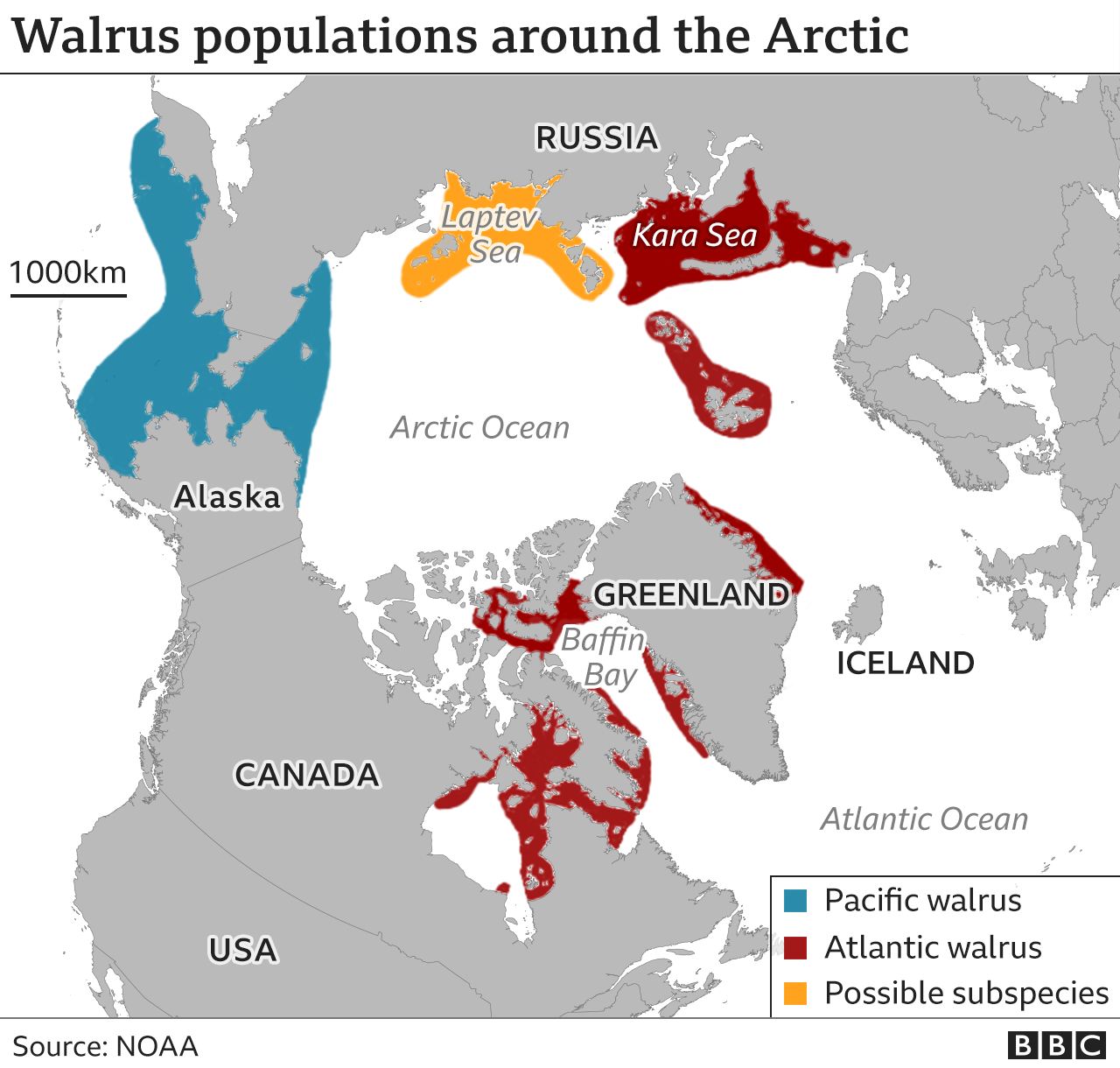

WWF is running the "Walrus From Space", external project jointly with the British Antarctic Survey, which has expertise in satellite surveys of polar wildlife.
BAS has long counted penguins from orbit, and is also now tracking seals, albatross, and even whales under the water.
"It's only recently that satellites have had high enough resolution to allow us to count walruses accurately," said BAS remote-sensing specialist Peter Fretwell.
"We'll be using Maxar's WorldView satellite which has a resolution where each pixel is only about 30cm on the ground. That's about the size of an A4 sheet of paper and we can easily count individual animals at that resolution."
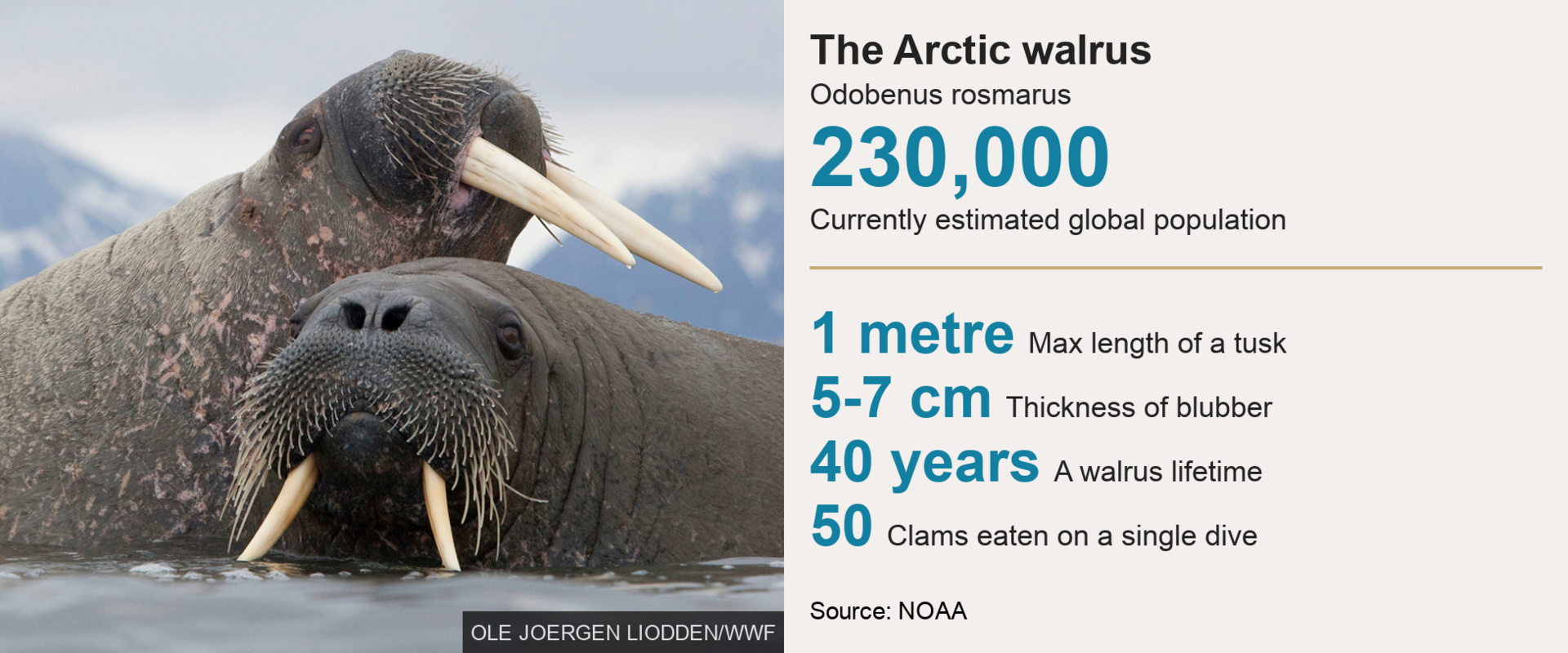
Volunteers are being directed to an online portal where they'll be shown images and asked, in the first instance, merely to state whether or not the view contains one or more of the tusked pinnipeds.
A second phase, once all "empty" pictures have been excluded, will then ask the volunteers to put a dot on every walrus they see.
The survey, which will run for at least five years, is concentrating on the Atlantic sub-species, and a somewhat isolated group of animals in the Laptev Sea area.
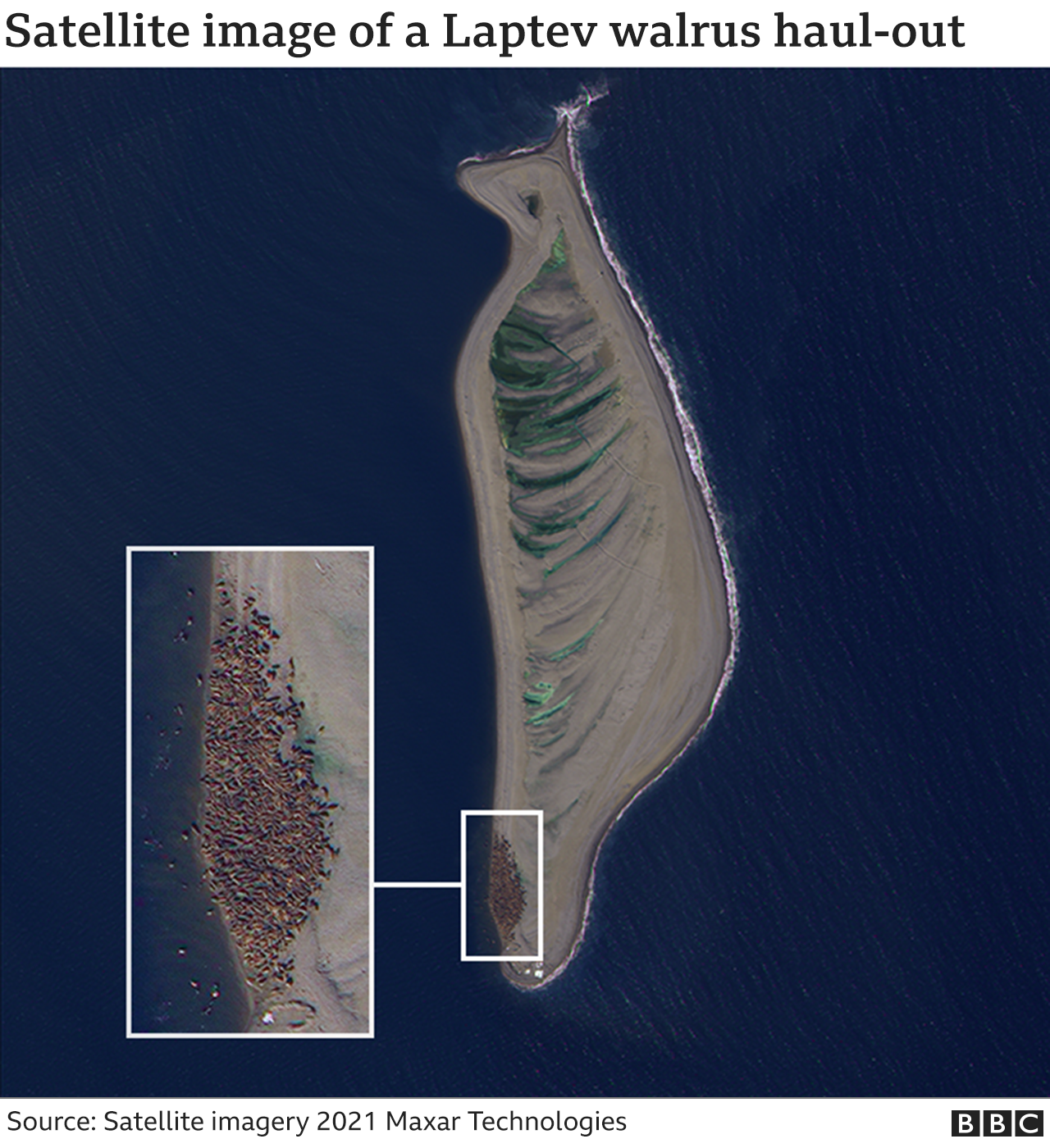

Today's estimate is that these mammals in total probably number around 30,000. The project hopefully will narrow the uncertainties.
Surveys of this kind naturally come with some caveats. For example, the type of satellite being used can't see the Earth's surface when it's cloudy; and walruses aren't static, they move around. But such confounding factors are all taken into account by the methodologies and models used to build population data-sets.
And, of course, they're underpinned by the knowledge of indigenous communities who live side-by-side with the walruses.
The Walrus From Space project is receiving funding support from the People's Postcode Lottery, the Royal Bank of Canada and directly from WWF supporters.
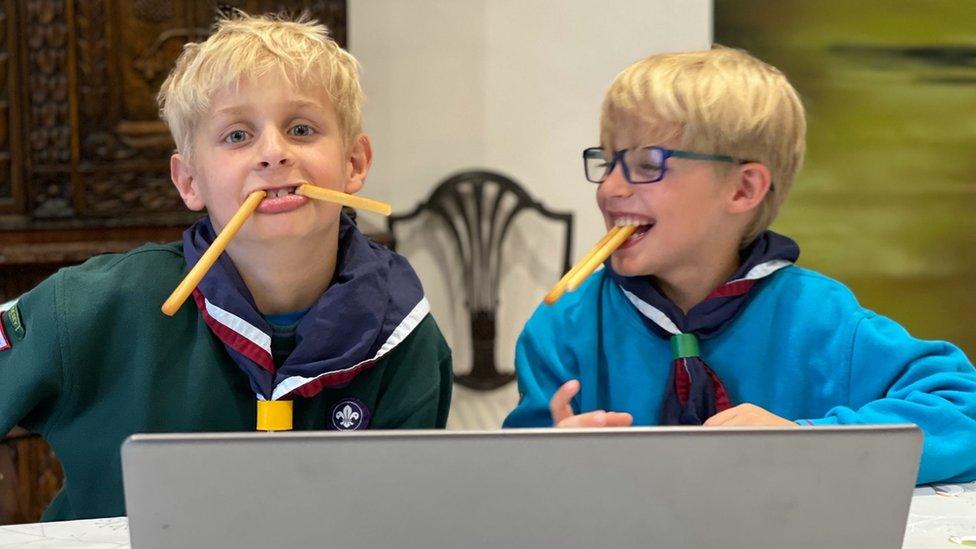
Cub scouts have been helping to test the counting portal
The goal is to recruit more than 500,000 citizen scientists over the next five years. Early volunteers have included cub scouts, who've been testing the counting portal ahead of its live launch.
Phoebe Overton, from the 1st Molesey scout group in Surrey, acknowledged it was tricky to identify the walruses even with the super-sharp pictures.
"It's quite hard because there are rusty barrels and rocks that look really similar," she said.
But Charlotte Guise, from the nearby 9th Walton-on-Thames group, added, "it's fun to see the way they live and how many there are, and they are kind of really cool creatures".
There is no plan at the moment for the project to try to count the Pacific sub-species of walrus, which may number some 200,000 individuals. Again, this estimate is uncertain.
"Whilst the Pacific walruses are a lot more numerous, Atlantic walruses are probably spread out over a larger area," Dr Downie said. "And if you include both Atlantic and Laptev, then you're talking about a vast area with many more haul-out sites. So, we're focussing on them, but there'll be other research groups in the Arctic working on the Pacific sub-species."
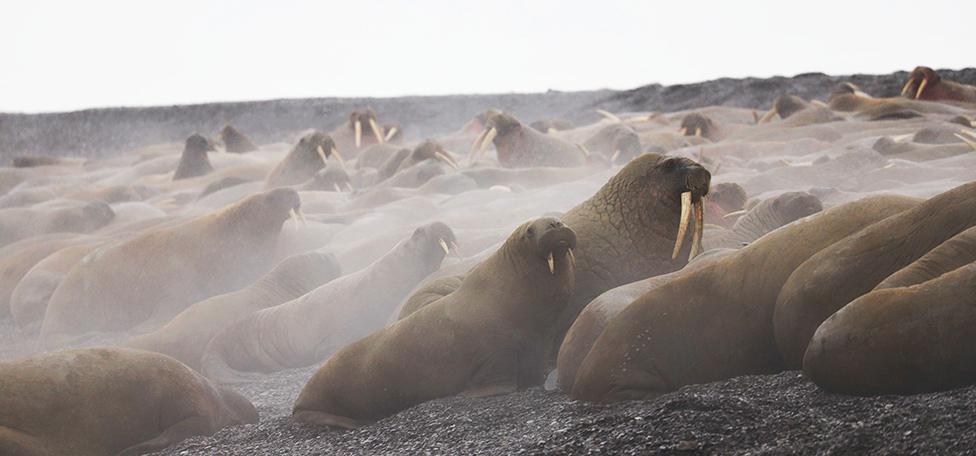
When walruses can't haul out on ice they will haul out on land
